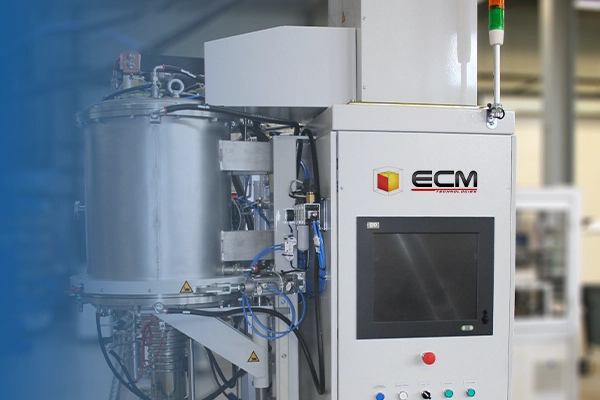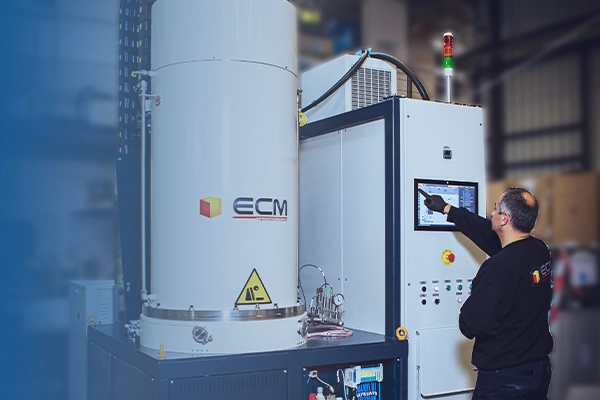Sintering furnace
for R&D
Our full range of
sintering furnaces

Liliput
Hearth lift vacuum
furnace
Allow high added value applications for heat treatment.

Turquoise
Vacuum horizontal
furnace
For oxidation-sensitive alloys such as nickel, titanium, etc.
Vacuum sintering furnaces
from ECM Lab Solutions.
ECM Lab Solutions offers vacuum furnaces for high-temperature heat treatments adapted to the sintering process with its Cristal, Lilliput, Turquoise ranges.
The advantages of ECM vacuum furnaces technology make it possible to overcome the temperature range restrictions of continuous furnaces. The absence of oxygen allows to sinter alloys that are highly sensitive to oxidation.
Our range of ECM vacuum furnaces enables materials to be sintered at high temperatures (up to 2000°C) while controlling the atmosphere (primary or secondary vacuum) or gas (nitrogen, argon, hydrogen) and ensuring good thermal homogeneity.
When it comes to sintering metal powders, ECM furnaces can be combined with gas quenching to cool parts much faster than with continuous furnaces.
Finally, if a final carburizing phase is required for steel parts, ECM’s unique furnace design allows immediate sequencing between the sintering phase and the low-pressure carburizing phase, keeping loads in the same furnace.
Thanks to this « all-in-one » cycle (debinding, sintering, carburizing and hardening) in the same furnace, cycle times can be drastically reduced.
Several processes can be executed in the same furnace, reducing the time of the global process.
Explanation of the sintering process.
What is the sintering process ?
Sintering is a process generally used in powder metallurgy to form a densified part by heat treatment, more generally by resistive or induction technologies. Also by laser, electron beam or infrared technologies.
Sintering is obtained by thermally consolidating the microstructure of the part and is largely used for ceramics and metallic parts manufacturing.
There are different types of sintering processes, depending on the material or the specific sintering method required, in particular vacuum or gaseous atmospheres (neutral or reducing), which can also integrate fast cooling (oil quenching or gas quenching).
Why using the sintering process ?
The sintering process, through all its stages (powder compression, sintering and quenching), makes it possible to modify the mechanical structures of parts to improve their performance.
The sintering process can improve the strength of the materials and also its mechanical handling strength.
What are the three stages in sintering ?
The sintering phase is just one stage in the overall process:
- A debinding or degassing phase : to remove the binder from the part, if necessary.
- The sintering process : to densify the structure of the part.
- A controlled cooling phase : varying in speed.
Need a sintering furnace for large-scale production ?
Discover our complete range of industrial sintering furnaces on our website dedicated to ECM Technologies.
Do you have a question or a project ?
Would you like more information, to entrust us with a project or meet our teams ? Fill in our form and our teams will get back to you as soon as possible!

